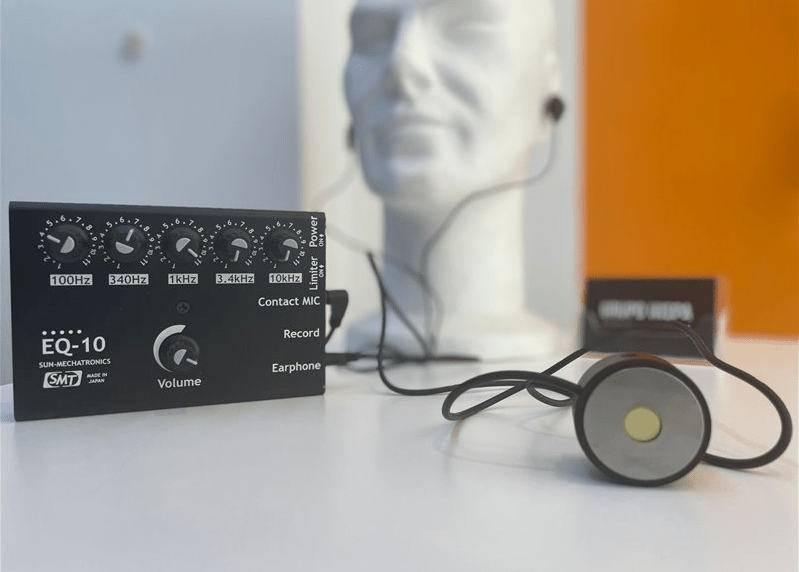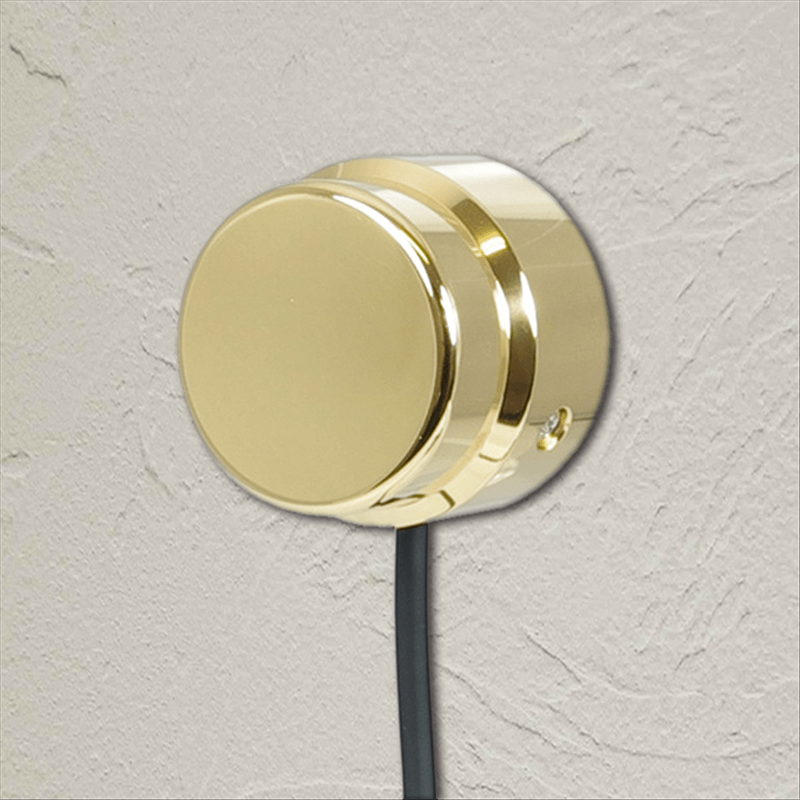Listen through a wall might seem like a technique straight out of a spies, but in reality, it has been a practice that has evolved over time. From the ancient methods of placing an ear against a wall to today's high-tech electronic devices, the ability to listen undetected has been invaluable in multiple contexts, from government spying operations to more mundane concerns among nosy neighbors.
The human desire for information has always driven innovation in multiple fields, and spying is no exception. In this article, we will explore the various techniques and tools that have been used to listen through walls, how they have evolved in the digital age, and the ethical and legal implications of such practices. So if you've ever wondered how these methods work, or are just curious about this intriguing aspect of espionage, keep reading!

Traditional Methods of Listening Through the Wall
The Glass on the Wall
One of the oldest and simplest techniques that people have used to listen through walls is the glass-on-the-wall technique. If you've ever watched classic detective movies, chances are you've witnessed this technique in action. It works like this: you place a glass with the rim against the wall and listen through the bottom of the glass. The glass acts as a conductor of sound, amplifying sound waves through its structure and allowing the listener to perceive more clearly what is being said on the other side of the wall.
Though it may seem rudimentary, the method has some power, especially in quiet environments. However, its effectiveness may be limited by factors such as wall thickness, vessel material, and ambient noise level.
Stethoscope
Commonly associated with doctors and nurses to listen to a patient's heartbeat or breathing, the stethoscope has also found its use in the realm of espionage. In fact, due to its sound-amplifying design, it can be even more effective than a simple glass on the wall.
To use this technique, the bell (the part that normally goes over the patient's skin) is placed against the wall and listened to through headphones. The stethoscope's acoustic design amplifies and clarifies sounds, allowing the listener to pick up speech or noise from the other side more accurately.
However, as with the glass, there are limitations. The effectiveness of the stethoscope will depend on the thickness of the wall, the material of the wall, and other environmental factors. Despite these limitations, the stethoscope's versatility and portability have made it a valuable tool not only in medicine, but also in the world of espionage.
Modern Devices for Listening Through a Wall
Contact Microphones
With the evolution of technology, the tools for espionage have advanced considerably. The contact microphones They are a clear example of this. Specifically designed to pick up vibrations through solid surfaces, these devices can deliver surprisingly clear sound quality when placed against a wall or other barrier.

They work by detecting the slightest vibrations in the surface they are placed against and transforming them into audible sound signals. contact microphones modernos are small, unobtrusive, and often come with headphones or recording systems to capture what is heard. However, it is essential to be cautious with its use, as unauthorized interception may be illegal in many jurisdictions.
Smartphone apps to listen through a wall
The rise of smartphones has revolutionized many areas of our lives, and espionage is no exception. Currently, there are apps available from app stores that claim to be able to help you hear through walls using your phone's microphone.
These applications work by amplifying the sound captured by the microphone of the device, allowing you to hear sounds that would otherwise be too faint to hear. While some of these apps can deliver decent results, it's important to remember that they're not on the level of specialized devices designed specifically for the purpose. In addition, it is essential to be aware of local laws regarding privacy and recording without consent before using any listening tool.
Privacy Considerations
Eavesdropping or just being curious to hear what is going on behind a wall raises important ethical and legal issues. As spy technologies become more accessible, it is vital to address privacy as a fundamental right that we should all respect.
Legislation and Consent
In most jurisdictions, recording or listening to private conversations without the consent of all parties involved is illegal. These laws are designed to protect the privacy and confidentiality of personal communications. Before using any device or app to listen through walls, it's crucial to educate yourself on local laws and make sure you're not violating them.
Ethics and Respect
Beyond legality, eavesdropping is, in many contexts, an ethical violation of someone's personal space and privacy. Every individual has the right to privacy in their conversations and daily activities. Infringing this right, even with the most advanced of technologies, is an act that must be seriously considered before being carried out.
Intrusion Consequences
Invasion of privacy can not only lead to legal penalties, but also loss of trust and potential damage to relationships. People feel betrayed when they find out that someone has been listening in or recording their private conversations. It is essential to weigh whether it is worth the risk and the potential negative consequences before acting impulsively.
In short, while technology has given us amazing tools that allow us to capture sounds in ways that were previously unthinkable, it is essential to use these tools responsibly, respectfully, and always with consideration the legal and ethical implications.
Frequently Asked Questions
How to hear through a wall?
Listening through a wall can be done using traditional methods, such as using a glass or stethoscope, or using modern devices such as contact microphones and smartphone apps. The effectiveness varies depending on the method and the quality of the device.
Is it legal to listen through walls?
The legality of listening through walls varies depending onaccording to jurisdiction. In many places, recording or listening to private conversations without the consent of all parties involved is illegal. It is essential to inform yourself about local laws before attempting any eavesdropping method.
Is listening with a glass on the wall really effective?
The cup-in-the-wall method has been used traditionally and can be effective in certain conditions. A glass can amplify sound and allow you to hear conversations on the other side of a thin wall. However, it is not as effective as modern technological solutions and may not work on thicker or insulated walls.
Can contact microphones damage walls?
No, the wall microphones are designed to be non-invasive and do not damage walls. They stick to the surface and pick up vibrations and sounds without the need to drill through or otherwise damage the wall. However, it is essential to follow the manufacturer's instructions when using them to ensure they function properly and to avoid any possible damage.
How do smartphone apps work for listening through walls?
Smartphone apps designed to listen through walls often use the phone's built-in microphone to pick up and amplify sounds. Many of these apps amplify audio in real time and allow the user to record or listen with headphones. It is important to mention that the effectiveness of these applications can vary and they do not always offer optimal audio quality.
Are there professional spying techniques for listening through thick walls?
Yes, there are professional spying techniques designed specifically for listening through thick or insulated walls. These techniques often use advanced equipment, such as laser microphones that detect vibrations in surfaces such as windows, or ultrasound devices that can "see" through certain obstacles. These pieces of equipment are sophisticated and often expensive, but offer greater efficacy compared to more traditional methods.
Can anyone tell I'm trying to listen through the wall?
Depending on the method or device you use, it can be difficult for someone to detect that you are trying to listen. Traditional methods like the glass on the wall are more obvious, but modern devices are often discreet. However, it is crucial to be cautious, since the use of certain devices can generate sounds or vibrations that alert the other party. Furthermore, the legality of listening without consent is questionable, so it is always advisable to proceed with caution and ethics.
How much do modern devices for listening through walls cost?
Prices for modern in-wall listening devices vary by technology, brand, and effectiveness. While some basic contact microphones can cost as little as €80, the most sophisticated and professional equipment can cost hundreds or even thousands of euros. It is essential to research and compare products to find one that suits your needs and budget.
What alternatives are there if I only want to remove noise from a shared wall?
If your goal is simply to reduce or eliminate noise coming from a shared wall, there are several solutions. These include acoustic panels, heavy curtains, carpeting, and sound insulation materials. In addition, there are more permanent solutions, such as the construction of a second wall or the installation ofsound insulation between the walls. These solutions can help improve acoustic privacy and comfort in your space.
Can you avoid being heard through a wall?
Yes, there are several ways to avoid being heard through a wall. Sound insulation is one of the most effective ways; this involves using materials that absorb or block sound. Acoustic panels, heavy drapes, and rugs can help reduce sound transmission. Also, maintaining a constant noise level, such as from a fan or background music, can mask conversations and make it more difficult to hear clearly through a wall.
How far can electronic devices go to hear through walls?
The distance that electronic devices can reach to hear through walls varies depending on the technology and quality of the device. Some high-quality contact microphones can pick up sounds through multiple layers of walls or even thick walls. However, the clarity of the picked up sound decreases with increasing distance and obstacles between the microphone and the sound source. It is important to do your research and choose a device that meets your specific needs.
Can you hear through a stone wall?
Hearing through a stone wall is considerably more difficult than through thinner walls or less dense materials. Stone is an excellent material for blocking and absorbing sound due to its density. However, with advanced technology, certain devices can pick up vibrations and sounds through stone walls, though the clarity will be limited. Loud sounds or intense vibrations are more likely to be detected through a stone wall than normal conversations.
Is it possible to listen through a pipe?
Yes, it is possible to listen through a pipe. Pipes can act as conduits for sound, especially if they are hollow. Sound can travel and be amplified within pipes, allowing it to be heard more clearly elsewhere in the pipe. This feature has been used in the past, for example, in some children's games and also in rudimentary spying techniques.
Where to buy a device to listen through a wall?
There are several stores and websites where you can buy devices to listen through walls, such as espiamos.com. Not only do they offer a wide variety of high-quality equipment, but they also guarantee a 3-year warranty and claim to have the best price on the market. When choosing a device, it's essential to do your research and select one that fits your needs and budget.
Does humidity or weather affect the ability to hear through walls?
Yes, both humidity and weather can affect the ability to hear through walls. Moisture can alter the density and acoustic properties of some materials, which can make sound transmission more difficult. Additionally, temperature fluctuations can cause materials to expand or contract, which can also affect sound transmission. These variables are important to consider when attempting to listen through walls, especially in extreme or changing conditions.






 WhatsApp
WhatsApp Telegram
Telegram


